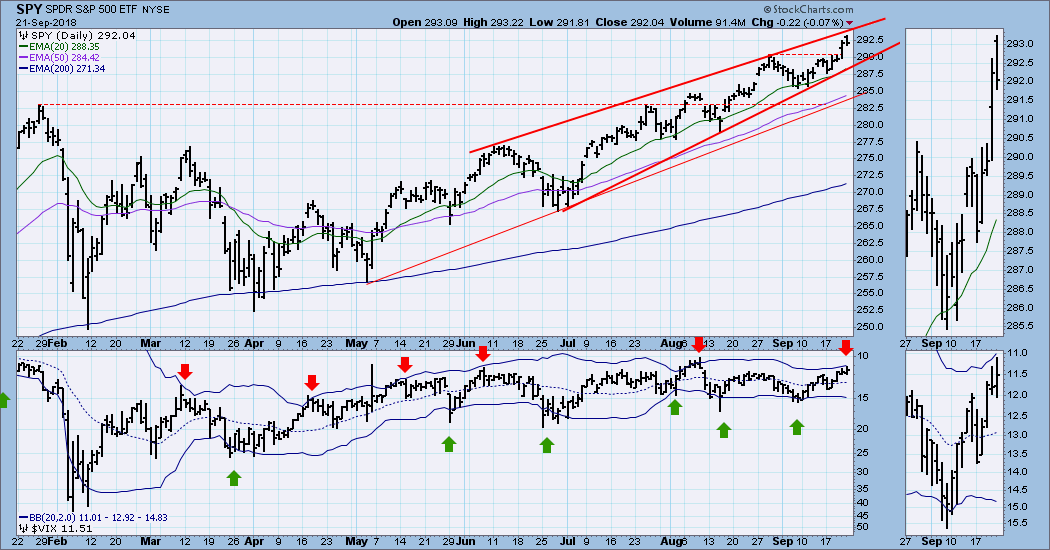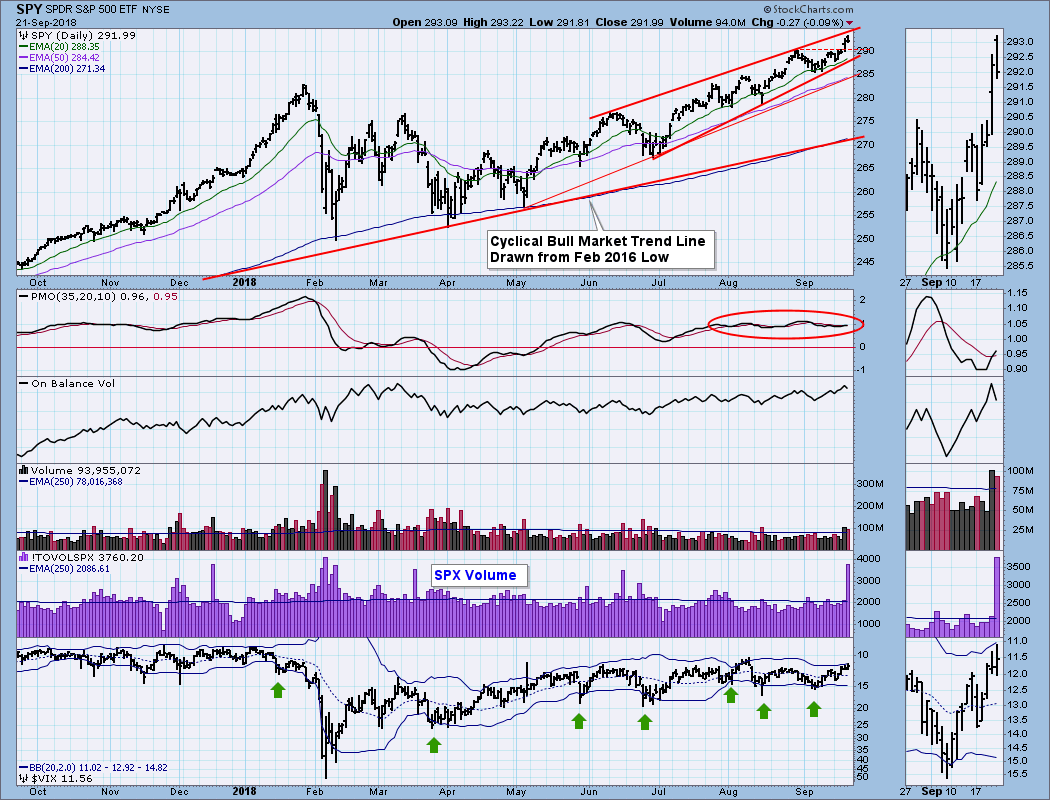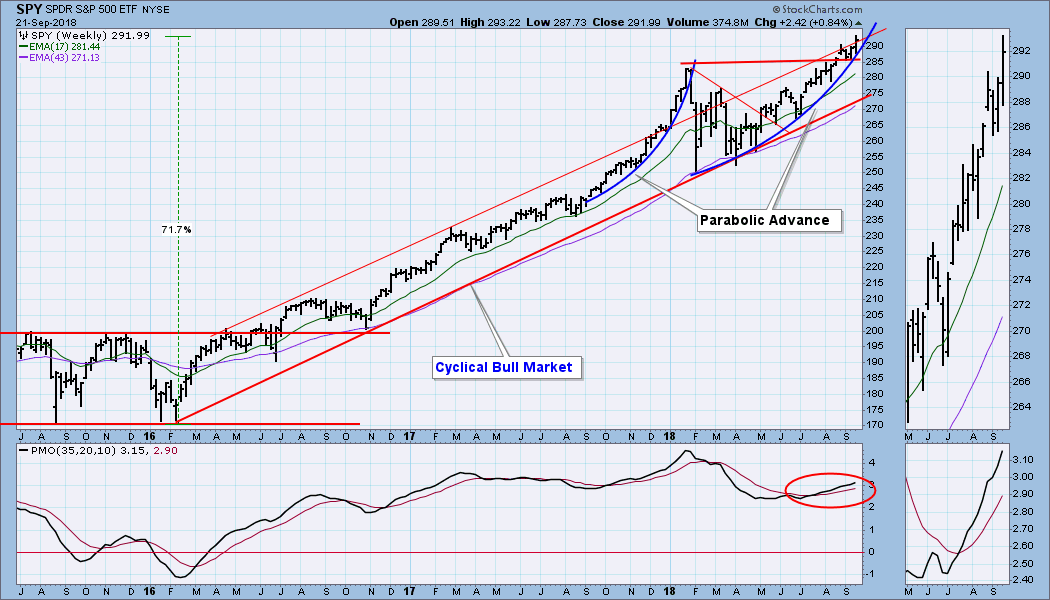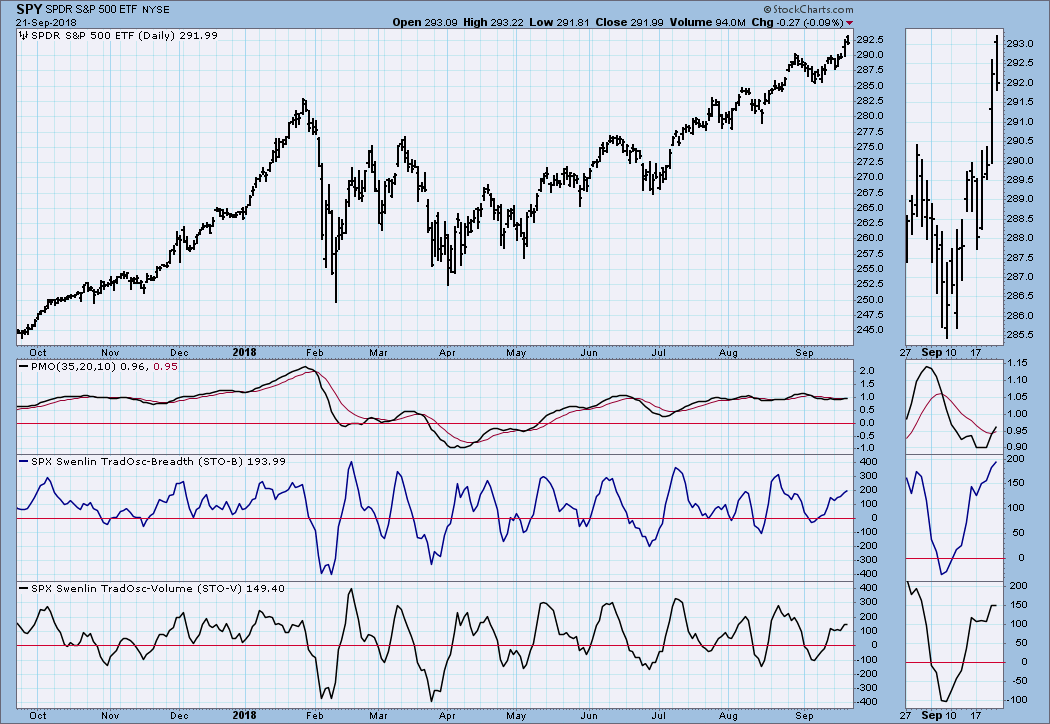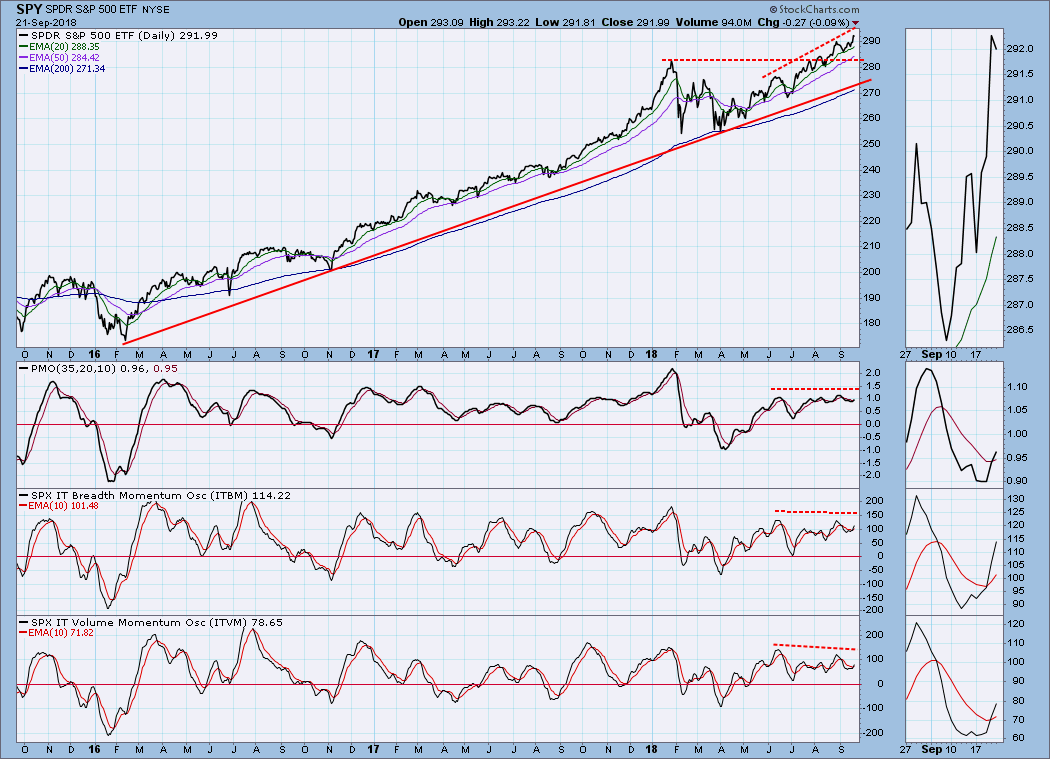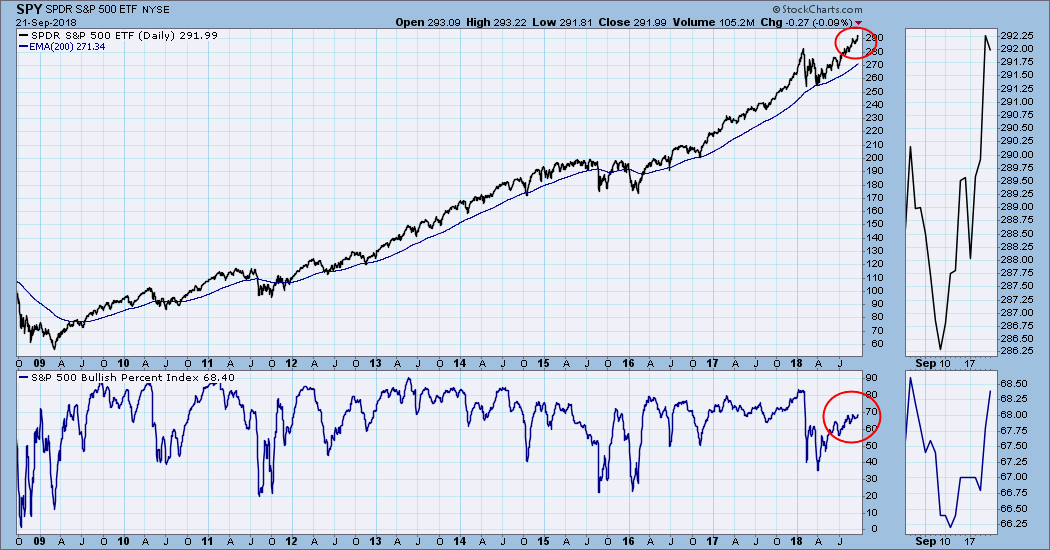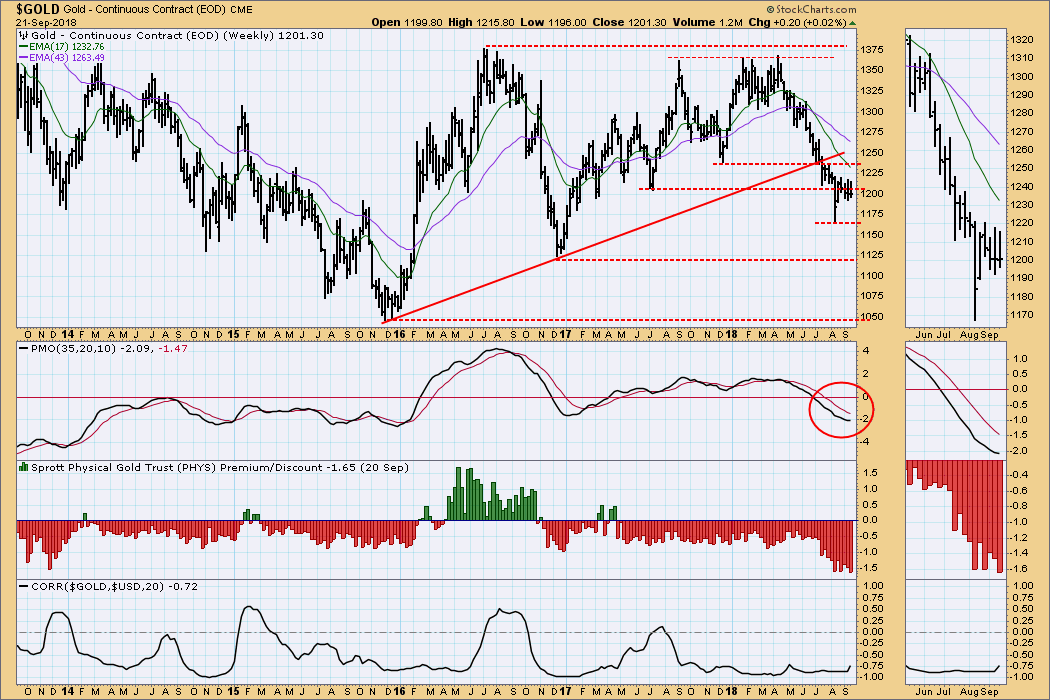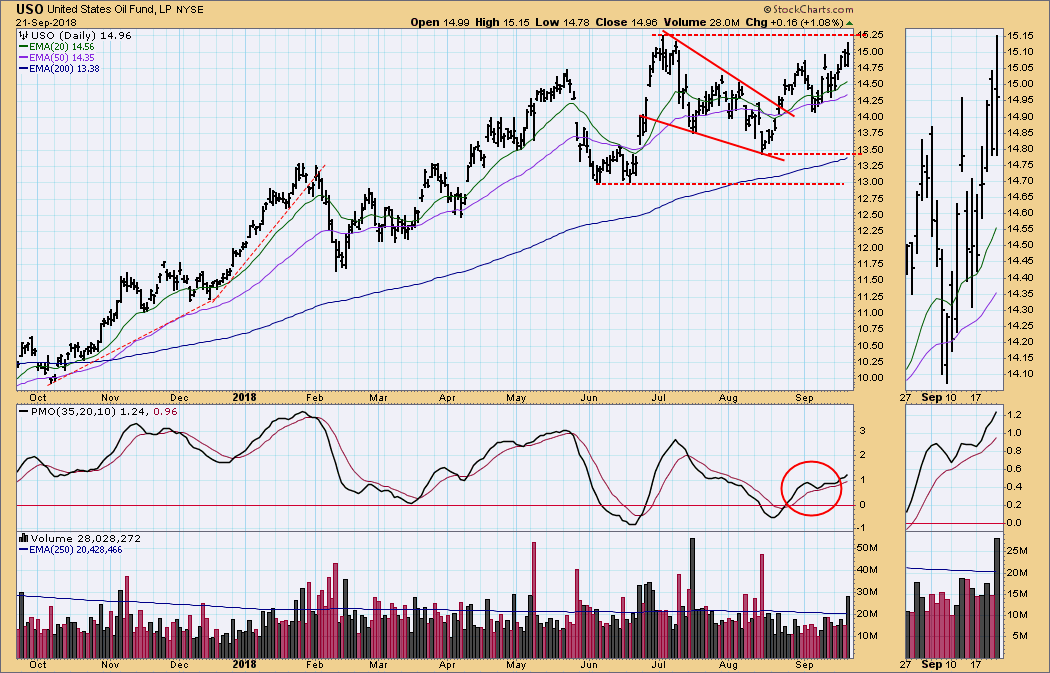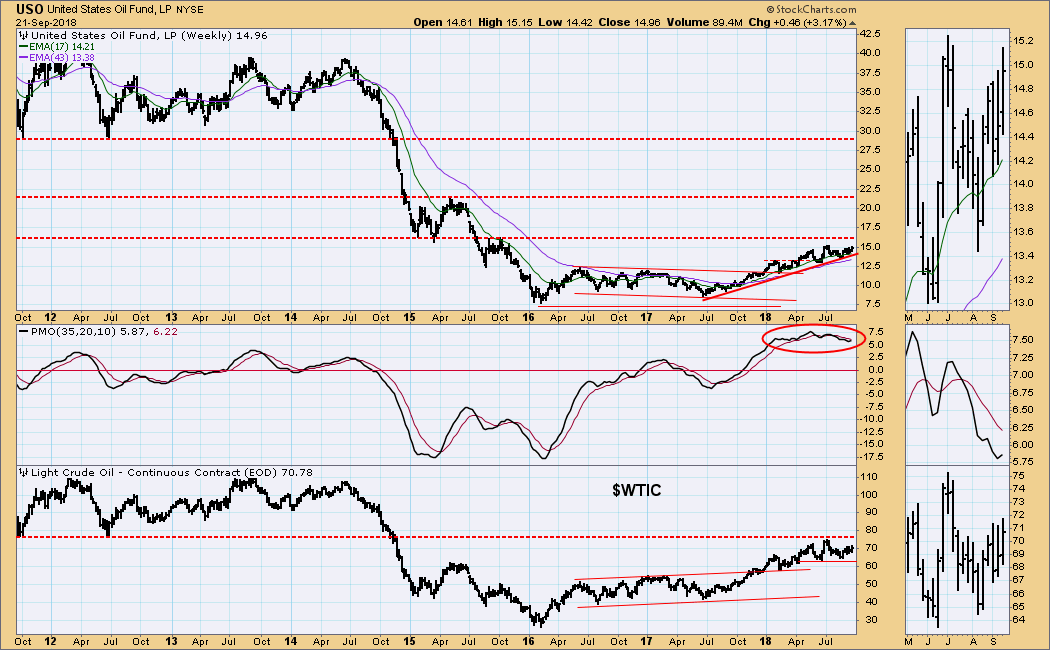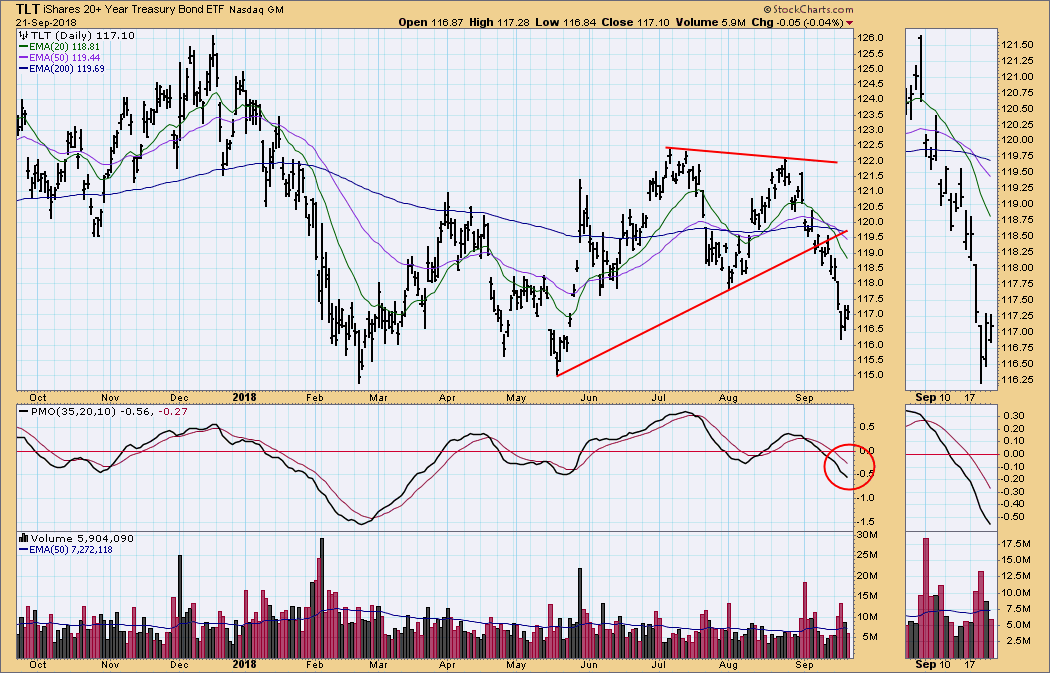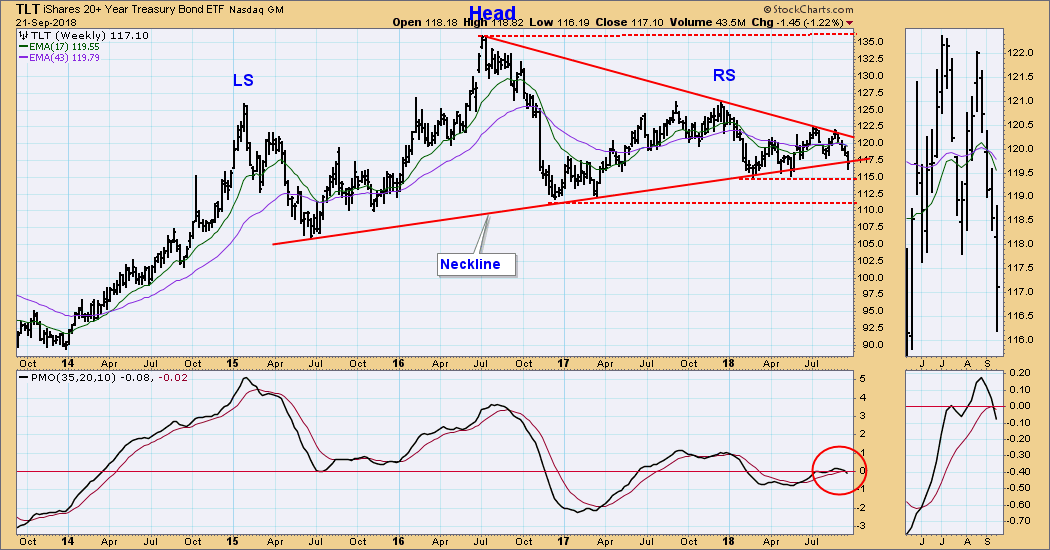
The market (represented by SPY) has nearly reached the top of a rising wedge formation, and the VIX has reached the top Bollinger Band on our reverse scale display. There is no guarantee, but there is a pretty good chance that a short-term top is very near. There is also the technical expectation that price will eventually break down from the rising wedge, but not necessarily on the next pullback.
The DecisionPoint Weekly Wrap presents an end-of-week assessment of the trend and condition of the stock market (S&P 500), the U.S. Dollar, Gold, Crude Oil, and Bonds.
SECTORS
Each S&P 500 Index component stock is assigned to one, and only one, of 10 major sectors. This is a snapshot of the Intermediate-Term and Long-Term Trend Model signal status for those sectors.
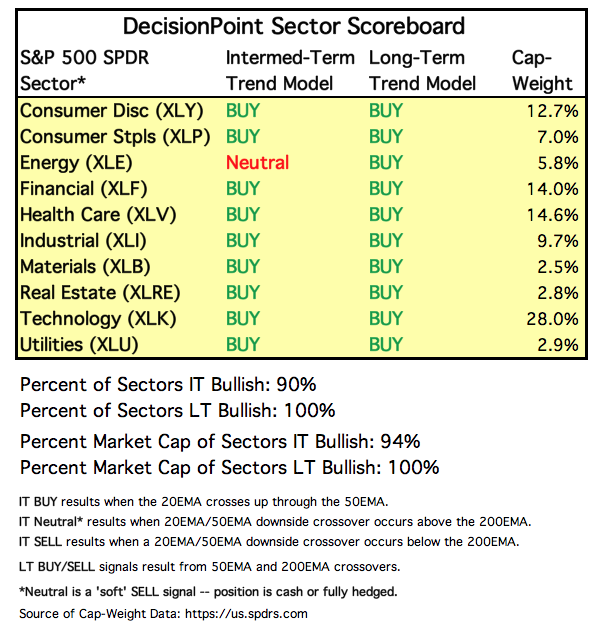
STOCKS
IT Trend Model: BUY as of 5/11/2018
LT Trend Model: BUY as of 4/1/2016
SPY Daily Chart: End of quarter options expiration brought the expected high volume on Friday, and, even though there was a bit of a price advance, the week's range was less than 2% wide. OBV confirms the price advance, and the daily PMO reflects the persistent strength of the extended rally.
SPY Weekly Chart: The parabolic advance remains intact, and price is challenging the top of the rising trend channel. The parabolic is in early stages. It reflects high confidence, but no buying frenzy yet.
Short-Term Market Indicators: These indicators are somewhat overbought, but there is plenty of room for them to become even more overbought.
Intermediate-Term Market Indicators: For weeks I have been emphasizing the negative divergences on these indicators, but in this case I think that was a mistake. Certainly, we can see cases on the chart where divergences seem to have telegraphed a certain outcome, but for several months indicators have been well above the zero line and running sideways. This is an expression of the persistent strength that has been driving the market higher.
CONCLUSION: This week the thing that stands out most to me is the short-term overbought condition visible on the first chart in this article. The rising wedge and VIX are telling us to look for a short pullback, but our experience over several months tells us that a pullback probably won't amount to much.
Longer term, there is evidence of narrowing participation. The Bullish Percent Index (BPI) for the S&P 500 is currently at 68. In January it was 83. What this tells us is that fewer of the smaller-cap stocks in the index are helping to push the market higher, and that the largest-cap stocks are doing more of the work. This is probably not of immediate concern -- back at the 2000 top the BPI was around 60. Nevertheless, it is less than ideal to have the market making new highs with a fading BPI.
DOLLAR (UUP)
IT Trend Model: BUY as of 4/24/2018
LT Trend Model: BUY as of 5/25/2018
UUP Daily Chart: As expected, price broke down from the rising wedge formation, and it is making choppy downside progress. We are standing by for the IT Trend Model to switch to NEUTRAL (20EMA/50EMA downside crossover), which will probably happen next week.
UUP Weekly Chart: The weekly PMO has topped, which implies that UUP will continue to pull back.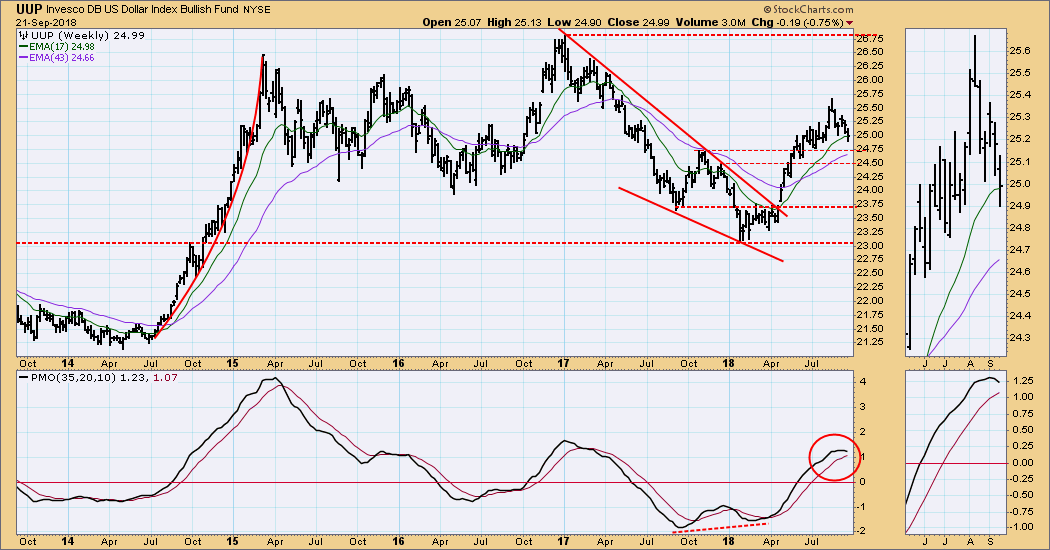
GOLD
IT Trend Model: NEUTRAL as of 5/2/2018
LT Trend Model: SELL as of 6/22/2018
GOLD Daily Chart: One would think that the dollar's weakness would have translated into strength in gold, but that didn't happen. Gold did hold its own and remains in a trading range.
GOLD Weekly Chart: Since gold is holding well above the August low, the weekly PMO almost bottomed this week. While we may see that low retested, my assumption is that a new up trend is beginning.
CRUDE OIL (USO)
IT Trend Model: BUY as of 8/24/2018
LT Trend Model: BUY as of 11/2/2017
USO Daily Chart: Last week the daily PMO short-term double top (inside circle) made me think that we would see lower prices this week. Wrong! USO charged higher and is about to challenge the horizontal resistance drawn across the July top.
USO Weekly Chart: More significant resistance is shown in this time frame, and both USO and $WTIC are fairly close to theirs. My assumption has been that crude oil has limited upside potential from current levels due to plentiful supply.
BONDS (TLT)
IT Trend Model: NEUTRAL as of 9/13/2018
LT Trend Model: SELL as of 9/18/2018
TLT Daily Chart: The LT Trend Model signal change this week was the fifth one in a year, and, thanks to sideways price movement, four of them took place in the last two months. Do we have more of this whipsaw nonsense to look forward to? Possibly, a bit more, but we need to look at a longer-term chart for clarity.
TLT Weekly Chart: The 2016 top was, in my opinion, the top (the end) of a 36-year bull market in bonds. It is also the head in a bearish head and shoulders pattern that we have been watching since early this year. The neckline was penetrated this week, but not yet decisively so. I think it is a matter of time, a short amount of time, before that takes place. Note that the weekly PMO has crossed down through the signal line.
**Don't miss any of the DecisionPoint commentaries! Go to the "Notify Me" box toward the end of this blog page to be notified as soon as they are published.**
Technical Analysis is a windsock, not a crystal ball.
Happy Charting!
- Carl
NOTE: The signal status reported herein is based upon mechanical trading model signals, specifically, the DecisionPoint Trend Model. They define the implied bias of the price index based upon moving average relationships, but they do not necessarily call for a specific action. They are information flags that should prompt chart review. Further, they do not call for continuous buying or selling during the life of the signal. For example, a BUY signal will probably (but not necessarily) return the best results if action is taken soon after the signal is generated. Additional opportunities for buying may be found as price zigzags higher, but the trader must look for optimum entry points. Conversely, exit points to preserve gains (or minimize losses) may be evident before the model mechanically closes the signal.
Helpful DecisionPoint Links:
DecisionPoint Shared ChartList and DecisionPoint Chart Gallery
Price Momentum Oscillator (PMO)
Swenlin Trading Oscillators (STO-B and STO-V)

